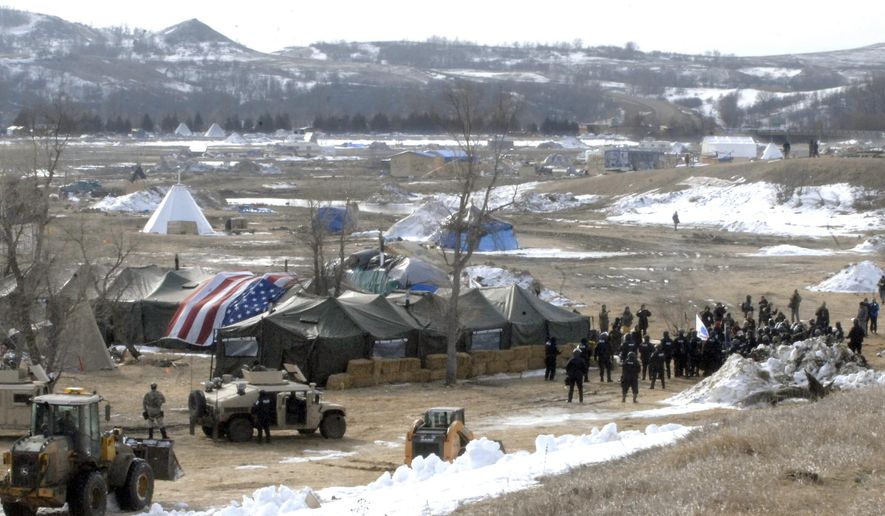After months of protest-driven delays, the Dakota Access pipeline now is running ahead of schedule and expected to be ready to deliver oil as early as next month.
Attorneys for Energy Transfer Partners said in a court-ordered status report Thursday that the final 1,100-foot section is nearly finished, which would enable the 1,172-mile, four-state pipeline to begin operations months ahead of estimates.
“Dakota Access reports that the pilot hole is complete,” said the report, filed Tuesday in U.S. District Court. “The company is currently reaming the hole — i.e., making it larger in order to accept the pipe. As of now, Dakota Access estimates and targets that the pipeline will be complete and ready to flow oil anywhere between the week of March 6, 2017, and April 1, 2017.”
Standing in the way are the Standing Rock Sioux and Cheyenne River Sioux, who have filed a lawsuit to stop the project pending the completion of an environmental impact study by the U.S. Army Corps of Engineers.
The tribes also have asked for “meaningful pre-decisional government-to-government consultation.”
U.S. District Judge James A. Boasberg approved Thursday an expedited briefing schedule, setting a March 23 deadline for the corps and Energy Transfer Partners to respond to the tribes’ request for summary judgment.
Phillip Ellis, spokesman for Earthjustice, which represents the Standing Rock Sioux, said the company’s “aggressive timeline doesn’t change the fact that President Trump and the Army Corps of Engineers broke the law and disregarded treaty rights.”
Earthjustice attorney Jan Hasselman said it was “disappointing” that the completion date has been moved ahead.
“We moved fast to get in front of operations. What’s disappointing is that this [flow date] is a couple of weeks earlier than it told the court was its best-case scenario,” Mr. Hasselman told The Bismarck Tribune. “Time is of the essence, but, as the judge said, the lawsuit doesn’t become irrelevant if they turn on the tap because he can always direct them to turn it off.”
The corps approved an easement in July for the pipeline to run under Lake Oahe at the Missouri River, but delayed and then withdrew it in December under pressure from thousands of protesters encamped near the construction site at Cannon Ball, North Dakota.
The corps then granted the easement Feb. 8 after Mr. Trump issued a memorandum in January calling for expediting review of the Dakota Access and Keystone XL pipelines.
Previous efforts by the Standing Rock Sioux to block the project in court have failed. Judge Boasberg denied in September the tribe’s request for a temporary injunction, then refused to grant a temporary restraining order in February.
In his Sept. 9 ruling, Judge Boasberg said the tribe rejected or ignored repeated requests to meet with the corps on the pipeline.
Energy Transfer Partners has argued that the Obama administration delayed the project for political reasons even though the pipeline cleared all necessary permitting hurdles, including environmental reviews.
The $3.8 billion project was built almost entirely on private property and does not cross any reservation land, but foes have argued that the risk of a leak imperils tribal water supplies.
• Valerie Richardson can be reached at vrichardson@washingtontimes.com.




Please read our comment policy before commenting.